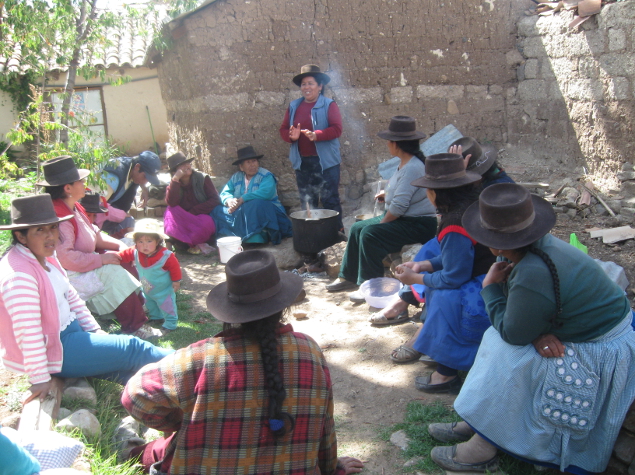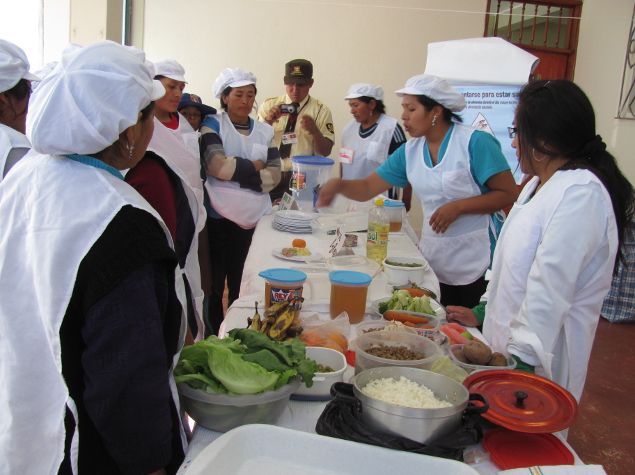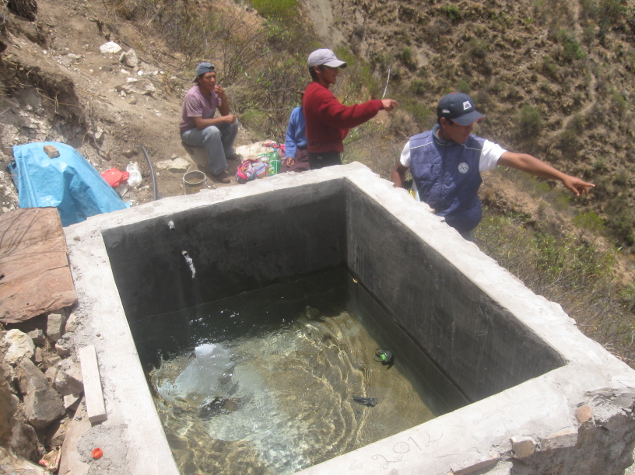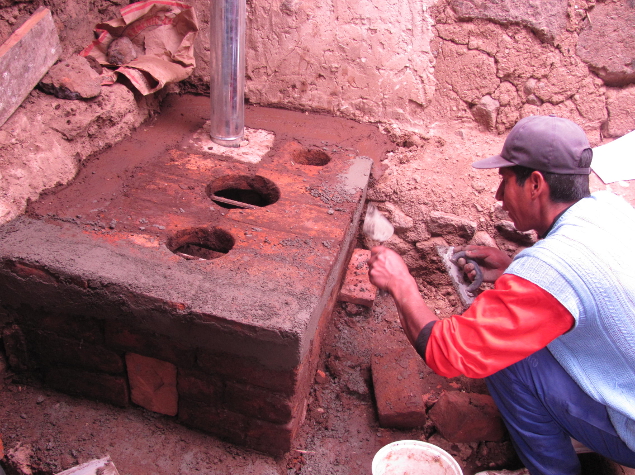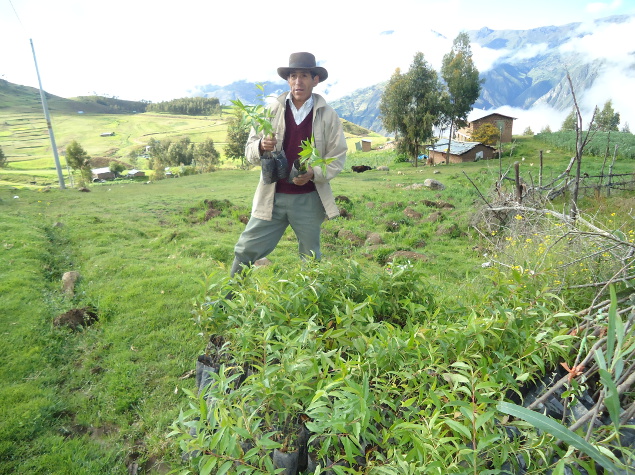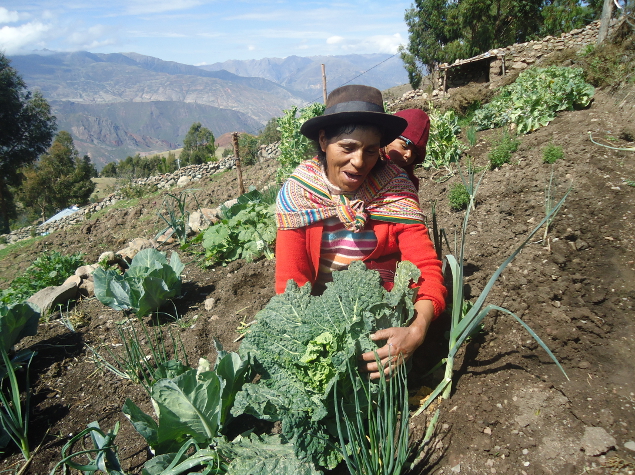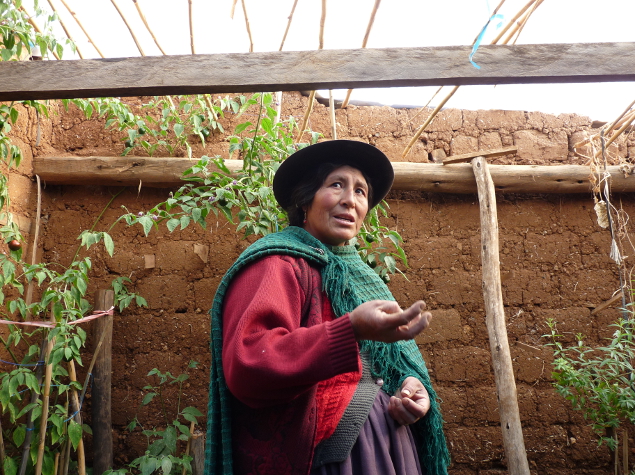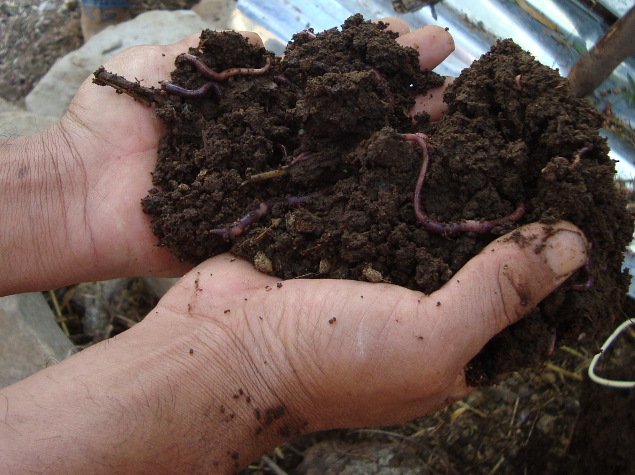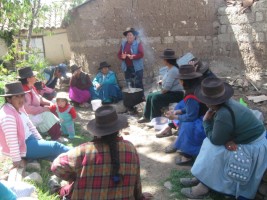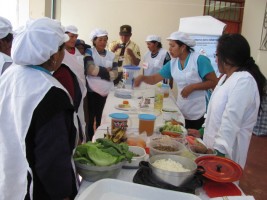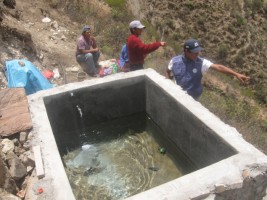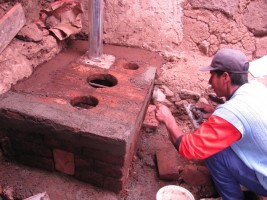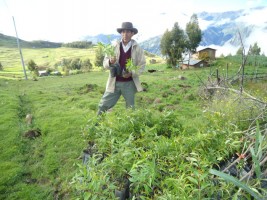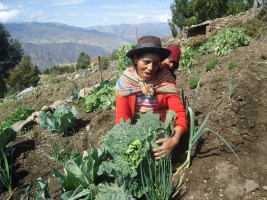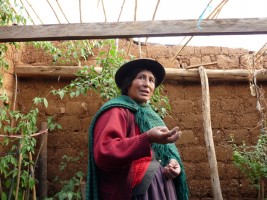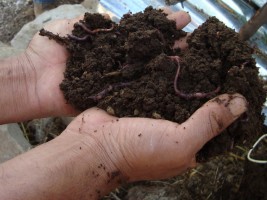Développement durable et gestion des ressources naturelles au Pérou (en anglais)
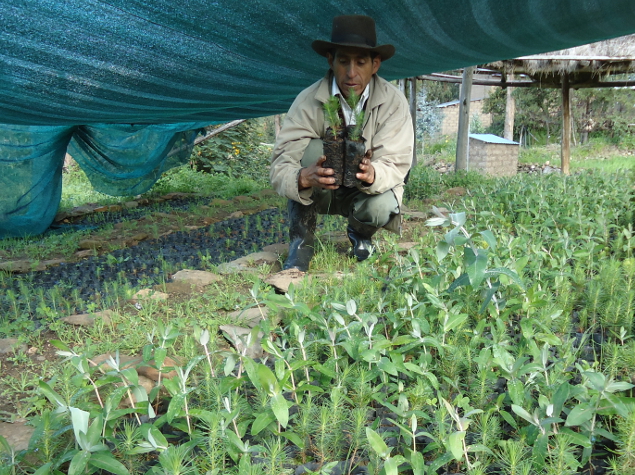
Peru’s economy is growing, but this growth is not visible in the poorest sectors of the rural population in the Andean highlands. Ayacucho – the target region for this project – is one of the most impoverished regions in the country: 68% of the population live in poverty while 53% lack clean water and 79% lack basic sanitation; 36% of children are chronically malnourished; and per capita income ranges between only 40-50 USD per month.
Most of the rural population here are small-scale farmers, but their traditional livelihoods are being threatened by the rapid retreat of tropical glaciers, which communities depend upon to irrigate their crops and pastures. During the last 30 years, around 22% of the country’s glaciers have disappeared due to rising air temperatures. As the glaciers continue to melt, farmers are increasingly at risk of having no water in the future and losing their livelihoods.
The local government lacks the capacity to actively participate in local development or support non-governmental initiatives. This two-year project will work with indigenous people from 23 rural communities to reduce their vulnerability to malnutrition, water shortages and poverty. Through the innovative and successful methodology of organising community competitions, beneficiaries will be incentivised to improve agricultural production based on the sustainable management of natural resources. Associations will then be able to use surplus produce to carry out their micro-enterprises.
Main objective :
Improve food and water security as well as income generating opportunities for impoverished, small-scale farmers.
Specific objectives :
- Support local development planning and actions to tackle climate change (at the community and district level)
- Increase families’ organic agricultural production through sustainability managing natural resources
- Increase associations’ income through strengthening their own enterprises
Project monitoring/evaluation process
- Four narrative and financial reports, including one final report
- Foundation visit by Sophie Thomasset in June 2013
- Mid-term internal evaluation in March 2013 and independent final evaluation in February 2014
Results and indicators
The figures in brackets represent the achievement rate in relation to the initial project objective.
- 4 local governments in HuancaSancos, 2 in Cangallo and one in La Mar have allocated funds to productive projects with a climate change focus in the 2013 and 2014 participatory budget process. The overall allocation for environmental and productive projects has increased in average by 45%. (+100%)
- 447 women are managing their natural resources and organic production adequately (52 in Cangallo, 275 in Huancasancos & 120 in La Mar). (112%)
- 167 producers in 13 associational have increased their income by 10% on average by selling their excess produce in the three provinces (130%)
- 7 municipal districts (2 in Cangallo, 3 in Huancasancos, 1 in La Mar) started incorporating environmental and climate change adaptation and mitigation approaches into their own local development plans. The regional government is working on their regional climate change strategy. (100%)
- 76.7 hectares terraced (128%) and 11.2 hectares of pasture (112%) has been installed.
- Household and producer groups have installed water storage of 92 728 cubic metres. (+100%)
- 185 sprinkler modules installed. (150%)
- 9 nurseries have been set up towards the refores tation – and 50.12 hectares have been reforested with forest and fruit trees. (100%)
- 12,25 hectares of diversified vegetable gardens set up (150%)
- 19 modules set up and 40 m3 of worm compost was produced in year 1 and 36 m3 in year 2 (150%)
- Production increased by 15-25% as a result of better production practices. (100%)
- 167 producers in 13 producer groups have increased their income by 10% on average by selling their excess.(100%)
The indicators show that the objectives set at the beginning of the project were all achieved or exceeded.
Sustainability of the actions undertaken
Extracts from the final evaluation report regarding sustainability:
According to the final evaluation, the project activities have a high level of sustainability. The goal of the project was that a larger number of families apply the suggested methods, with technical support at the local level, and that the communities’ development objectives be included in Local Development Plans, enabling families to benefit from local government support and resources.
One of the project objectives was to set up associations that would enable surplus produce to be sold to generate income. Unfortunately, the status of ‘association’ has not proved appropriate, and the evaluation recommends shifting to a cooperative model.
Greenhouse production seems to be regarded as secondary to livestock production and, as a result, the tarps are not well enough maintained. The reservoirs and irrigation systems, however, have been accepted, and maintenance seems to be satisfactory overall. The replication system is working in some communities.
New production methods (particularly for fruit trees) have been adopted. The organizational improvement in their living environment has brought real change to the beneficiaries’ lives and is a source of motivation for continuing the development process.
Conclusion of the final evaluation, February 2014 (G. Jose Alarco Bazan, Runkaperu)
- The project corresponded to the national and local approach to food security. The activities chosen to be addressed have been perceived as necessary by the beneficiaries and the local authorities.
- The beneficiaries and local authorities feel satisfied with and appreciate the work done by the CEDAP and HUÑUQ MAYU.
- The target populations met the selection criteria to participate in the intervention.
- The project has contributed to improve the agricultural capacity, especially for local irrigation and to generate a favourable change in the livelihoods and relationships within and between the communities where it has been implemented.
- The project has executed all the actions planned within the logical framework.
- The CEDAP team found great strength in its relationship with the District Municipality of Sacsamarca. Based on this it was able to position different initiatives in favour of the communities in its jurisdiction, in addition to having a coherent proposal for concerted development. Another example is the work carried out by Huñuq Mayu with the different authorities and the Municipality of Andahuaylas to market the products from the area of Oreja de Perro and get funds from the Municipality of Chungui to maintain the Kutina Chaka fair. However, the same level of commitment was not achieved with other participating municipalities. One of them even failed to meet the commitments it made.
- The Project is aligned with Christian AID’s objectives regarding the development of resilient livelihoods, food security in Peru and territorial development.
- Because of the geographical complexity of the area, the executing team needed more support staff to carry out the field activities and provide support for them.
- The executing team has failed to systematically embrace the Climate Change Adaptation model as part of a strategy to promote, through its work, gender equality beyond participation records and internship quotas. It is important that a common strategy to address the gender approach is initially defined during the execution of any project.
- Internal and external internships broaden the participants’ spatial horizons and knowledge, generating peer-to-peer learning.
- The main objective of peasant production in the localities where the project was executed was home consumption. Expanding the supply of agro-biological products without the certainty of expanding the demand at the same time could increase the costs and conflicts in the transaction.
- On the other hand it is important to make a preliminary assessment of the reach expected to be achieved according to the available resources. This analysis would have served to seek alternatives to strengthen the executing team.
- Distinction between the private and the collective in Andean societies must be defined explicitly, how they will be articulated in the different Project activities, especially where partnership initiatives are concerned.
- Relations with Christian AID have been fluid and there has been permanent communication.
- The farmers have appropriated good agricultural practices, individually and as families; mainly because of how easy they are to use and apply (they can do it at home). However, at the associative level the process of appropriation is still incipient because of a lack of self-confidence and vision to propose marketing strategies beyond the individual level. Only one of the associations has reached that level.
- It is currently premature to estimate the effects on the family economies of the beneficiaries. However, there is enough evidence that the increase in arable land, thanks to the new irrigation systems, will improve food availability for the local diet and generate a surplus for the district market.
- One of the effects most highlighted by the beneficiaries is the benefit they have achieved as a result of modifying their homes and the impact of these measures on their health (decreasing their vulnerability). Some of the women beneficiaries report that their children suffer less respiratory diseases thanks to the implementation of improved stoves and the houses’ insulation system.
- The technologies employed are within reach of the community members who feel capable of maintaining both their homes and the irrigation and storage of water for irrigation infrastructure.

